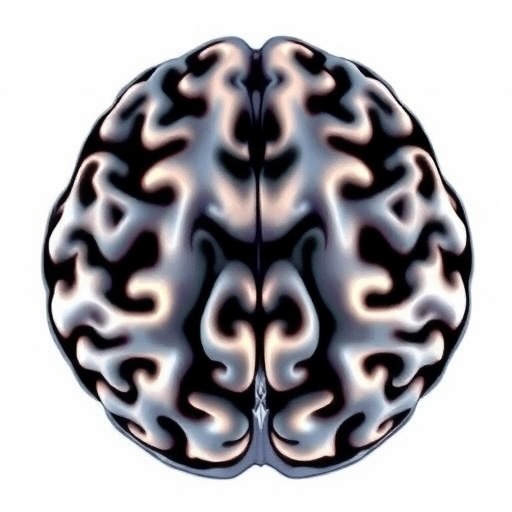Glioblastoma, the most aggressive form of brain cancer, continues to baffle researchers and clinicians alike due to its notorious resistance to conventional and cutting-edge therapies. Despite advances in surgery, radiation, and chemotherapy, patient prognosis remains grim, with median survival rarely extending beyond 15 months. The advent of immunotherapy, which has revolutionized treatment for many malignancies, has so far had limited success in glioblastoma patients. The underlying mechanisms that confer this resistance have remained elusive, but a recent groundbreaking study spearheaded by Dr. Rakesh Jain and colleagues at Massachusetts General Hospital and Harvard Medical School sheds unprecedented light on this vexing problem, offering hope for a new therapeutic frontier.
At the heart of this research lies the Wnt signaling pathway, a highly conserved cellular communication system that orchestrates key processes such as stem cell renewal, differentiation, and tissue homeostasis. In the context of cancer, aberrant Wnt signaling has long been implicated in tumor initiation and progression, yet its precise role in glioblastoma’s immune evasion remained under-explored. Dr. Jain’s team identified an isoform, Wnt7b, as markedly overexpressed in glioblastoma samples, suggesting its pivotal influence on the tumor microenvironment’s ability to thwart immune attack.
The investigative thrust of the study revolved around deciphering how Wnt7b mediates resistance to immune checkpoint blockade therapies, specifically anti-PD1 antibodies, which have transformed outcomes in cancers like melanoma and lung cancer but failed to produce meaningful responses in glioblastoma patients. By employing rigorous experimental models, including murine glioblastoma systems, the researchers demonstrated that elevated Wnt7b expression bolsters the tumor’s immunosuppressive capability, thereby impeding the activation and infiltration of tumor-targeting immune cells.
To counter this recalcitrant mechanism, the study explored the efficacy of WNT974, a small-molecule inhibitor that impedes porcupine, a key enzyme necessary for Wnt ligand secretion and signaling. Administered in conjunction with anti-PD1 therapy, WNT974 dramatically altered the tumor-immune dynamic. The dual treatment reinvigorated the immune microenvironment, notably by enhancing the function of dendritic cells, which are essential for antigen presentation and priming of cytotoxic T lymphocytes. Concurrently, the regimen suppressed populations of myeloid-derived suppressor cells and regulatory T cells, further dismantling the tumor’s protective immune shield.
This combinatorial approach yielded striking results. In preclinical models, the synergy between WNT974 and anti-PD1 led to significant tumor regression and extended survival, effects that were unattainable with monotherapy. Some mice exhibited durable remissions, underscoring the therapy’s potential in inducing long-lasting immunity. Beyond tumor metrics, the research meticulously dissected the mechanistic underpinnings at molecular and cellular levels, affirming that targeting the Wnt7b/β-catenin axis can recalibrate the immunosuppressive architecture inherent to glioblastoma.
The implications of these findings extend far beyond bench science. Glioblastoma’s cellular heterogeneity, often dominated by stem-like tumor-initiating cells that promote relapse and treatment failure, is notoriously challenging to target. By illuminating Wnt7b as a lynchpin in this resistance, the study opens a window into the possibility of personalized medicine strategies that tailor immunotherapy regimens based on tumor Wnt pathway activity. Biomarker-driven patient selection for combination WNT974 and anti-PD1 therapies could revolutionize clinical approaches, transforming glioblastoma from an intractable foe to a more manageable disease.
Encouragingly, WNT974 has previously undergone phase I safety trials in patients with extracranial solid tumors, demonstrating a favorable toxicity profile. This existing clinical data paves the way for more rapid translation of these preclinical insights into early-phase trials for glioblastoma, an area desperately in need of therapeutic innovation. Dr. Jain advocates for personalized clinical trials targeting patients whose tumors exhibit high Wnt7b/β-catenin signaling, hypothesizing that such a precision oncology approach is paramount to overcoming the formidable immunoresistance barriers.
The study exemplifies a paradigm shift in immuno-oncology—recognizing that the tumor microenvironment’s intrinsic signaling pathways not only drive growth but also orchestrate immune escape. Traditional checkpoint inhibitors unleash the immune system but may be stymied if tumors simultaneously deploy non-immune resistance mechanisms, such as Wnt-driven stemness and immune evasion. Combining targeted pathway inhibition with immune checkpoint blockade represents a sophisticated assault on multiple fronts, designed to reanimate the immune system’s ability to recognize and eradicate cancer cells.
This work was made possible through the concerted efforts of a multidisciplinary team, comprising immunologists, oncologists, molecular biologists, and clinicians. Their comprehensive approach, ranging from molecular analyses to sophisticated animal models, ensures that observations are both mechanistically grounded and clinically relevant. Moreover, the study was robustly supported by federal and philanthropic funding agencies, underscoring the critical societal investment in combatting lethal malignancies such as glioblastoma.
Despite the hopeful outcomes, challenges remain. The exact dosing, timing, and patient selection criteria for WNT974 and anti-PD1 combinatorial therapy must be rigorously assessed in clinical settings. Potential resistance mechanisms to Wnt inhibition itself could emerge, necessitating further research into adaptive strategies. Additionally, given glioblastoma’s unique location behind the blood-brain barrier, ensuring therapeutic agents’ adequate penetration and bioavailability remains a therapeutic hurdle.
Nonetheless, the findings invigorate the field with renewed optimism. By detailing a molecular mechanism of immunotherapy resistance and offering a viable strategy to surmount it, Dr. Jain and colleagues contribute a seminal advance in the pursuit of effective glioblastoma therapies. The possibility of converting immunologically “cold” tumors into “hot” ones responsive to treatment is a tantalizing prospect that could redefine patient outcomes in the near future.
As the landscape of cancer treatment evolves, integrative approaches targeting tumor-intrinsic pathways and the immune microenvironment will undoubtedly gain prominence. Studies such as this not only expand our biological understanding but also serve as a beacon guiding clinical innovation. For glioblastoma patients and their families, these scientific strides translate into tangible hope—a promise that the devastating course of this disease may one day be altered by precision immunotherapy powered by targeted inhibition of the Wnt7b/β-catenin axis.
Subject of Research: Animals
Article Title: Wnt inhibition alleviates resistance to anti-PD1 therapy and improves antitumor immunity in glioblastoma
News Publication Date: 17-Sep-2025
Web References: https://doi.org/10.1073/pnas.2414941122
References: Krishnan, S., et al. “Wnt inhibition alleviates resistance to anti-PD1 therapy and improves anti-tumor immunity in glioblastoma.” PNAS. DOI: 10.1073/pnas.2414941122




